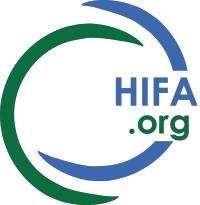Interesting new paper from the Archives of Disease in Childhood. The paper itself is open-access, thanks to ADC's policy on making global health research available to all (further to advocacy from HIFA and CHIFA). The linked editorial is restricted-access, which is a shame because linked editorials are often extremely useful as objective commentary.
CITATION: Li G, Bielicki JA, Ahmed ASMNU, et al. Towards understanding global patterns of antimicrobial use and resistance in neonatal sepsis: insights from the NeoAMR network. Archives of Disease in Childhood 2020;105:26-31.
http://dx.doi.org/10.1136/archdischild-2019-316816
ABSTRACT
Objective: To gain an understanding of the variation in available resources and clinical practices between neonatal units (NNUs) in the low-income and middle-income country (LMIC) setting to inform the design of an observational study on the burden of unit-level antimicrobial resistance (AMR).
Design: A web-based survey using a REDCap database was circulated to NNUs participating in the Neonatal AMR research network. The survey included questions about NNU funding structure, size, admission rates, access to supportive therapies, empirical antimicrobial guidelines and period prevalence of neonatal blood culture isolates and their resistance patterns.
Setting: 39 NNUs from 12 countries.
Patients: Any neonate admitted to one of the participating NNUs.
Interventions: This was an observational cohort study.
Results: The number of live births per unit ranged from 513 to 27 700 over the 12-month study period, with the number of neonatal cots ranging from 12 to 110. The proportion of preterm admissions <32 weeks ranged from 0% to 19%, and the majority of units (26/39, 66%) use Essential Medicines List ‘Access’ antimicrobials as their first-line treatment in neonatal sepsis. Cephalosporin resistance rates in Gram-negative isolates ranged from 26% to 84%, and carbapenem resistance rates ranged from 0% to 81%. Glycopeptide resistance rates among Gram-positive isolates ranged from 0% to 45%.
Conclusion: AMR is already a significant issue in NNUs worldwide. The apparent burden of AMR in a given NNU in the LMIC setting can be influenced by a range of factors which will vary substantially between NNUs. These variations must be considered when designing interventions to improve neonatal mortality globally.
Best wishes, Neil
Let's build a future where children are no longer dying for lack of healthcare information - Join CHIFA (Child Healthcare Information For All): http://www.hifa.org/forums/chifa-child-health-and-rights
CHIFA profile: Neil Pakenham-Walsh is the coordinator of the HIFA campaign (Healthcare Information For All) and assistant moderator of the CHIFA forum. Twitter: @hifa_org FB: facebook.com/HIFAdotORG neil@hifa.org

